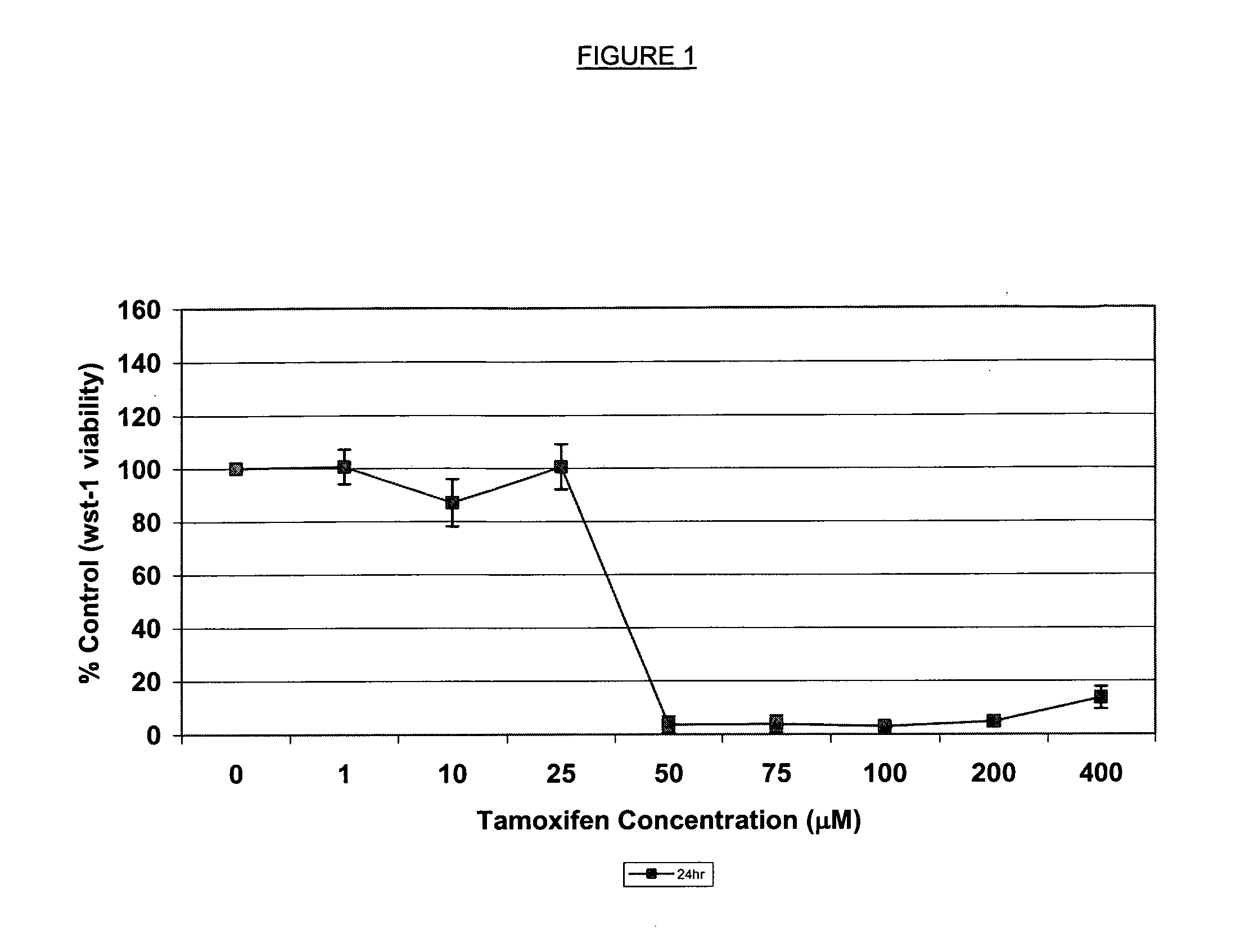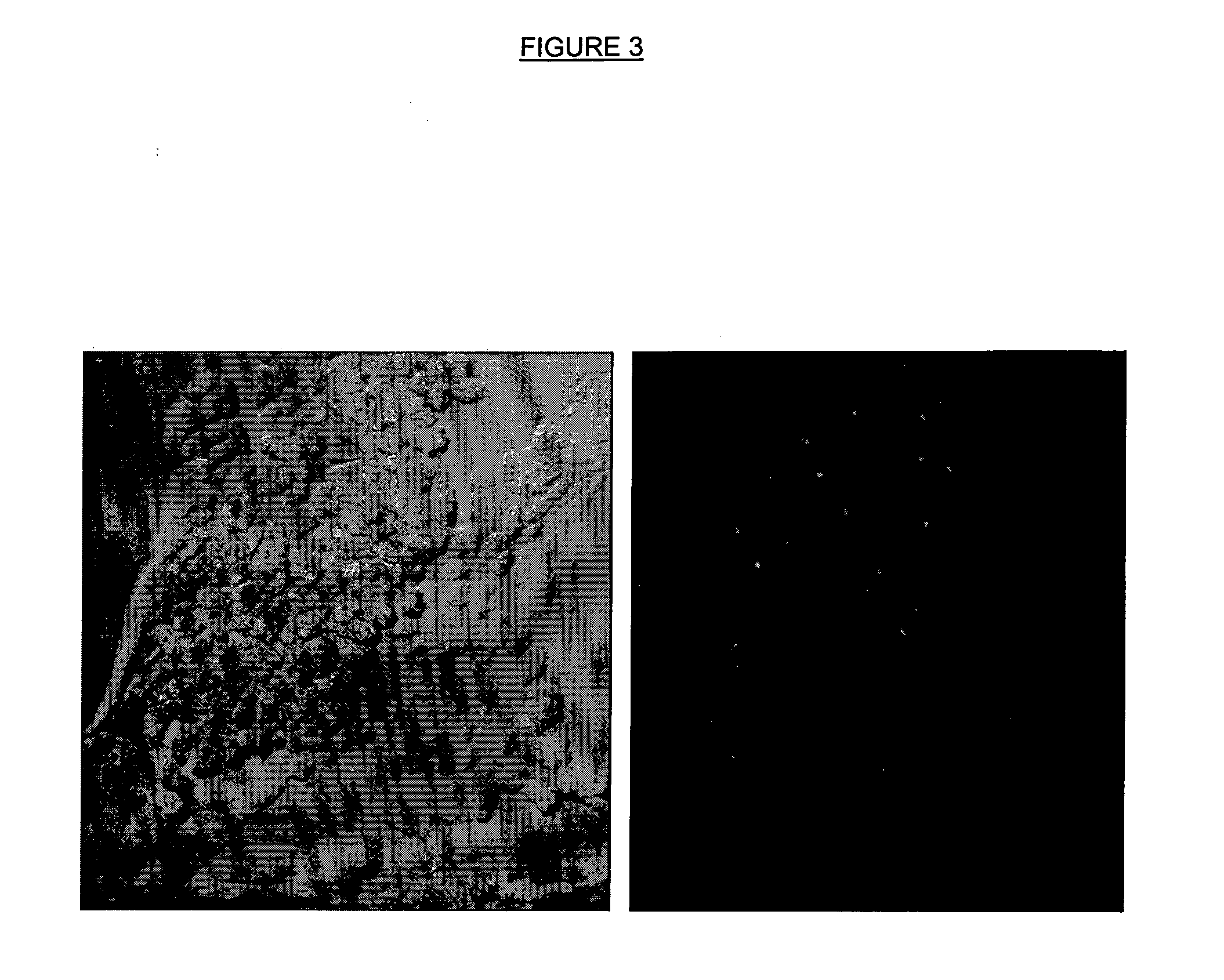Retinal toxicity screening methods
a toxicity screening and retina technology, applied in the field of retinal toxicity screening methods, can solve the problems of retinal damage inducible by certain drugs, vision impairment and loss, and certain drugs can induce retinal damag
- Summary
- Abstract
- Description
- Claims
- Application Information
AI Technical Summary
Benefits of technology
Problems solved by technology
Method used
Image
Examples
example 1
Preparation of Disulfide [Cys2-6] Thioether Cyclo [CH2CO-Lys (fluorescein)-Cys2-Arg-Gly-Asp-Cys6-Phe-Cys]-(PEG)-NH2
[0056] Thirty milligrams of disulfide [Cys2-6] thioether cyclo [CH2CO-Lys-Cys2-Arg-Gly-Asp-Cys6-Phe-Cys]-(PEG)-NH2, prepared by method described in Example 2 of International Patent Application Publication No. WO 03 / 006491, is dissolved in DMF (3 mL) together with NHS-fluorescein (16.2 mg) and N-methylmorpholine (4 μl). The mixture is protected from light and stirred overnight. The mixture is then purified by HPLC (Vydac 218TP1022 C18 column) using 20-30% B, where A=H2O / 0.1% TFA and B=CH3CN / 0.1 TFA, over 40 minutes at a flow rate of 10 mL / minute. The resulting fraction is lyophilized to yield 21.6 mg of the title compound.
[0057] Analytical GPLC: gradient, 10-40% B over 10 minutes where A=H2O / 0.1% TFA and B=CH3CN / 0.1% TFA; column, Phenomenex Luna 3μ C18 (2) 50×4.6 mm; flow, 2 mL / minute; detection, UV 214 nm; product retention time 7.0 minutes. Mass spectrometry: expect...
example 2
Assay to Identify Retinal Toxic Agents
[0059] RPE-J cells were plate cultured in high glucose DMEM medium (cat. no. 10313021, Invitrogen, Carlsbad, Calif.) containing 4% fetal calf serum (cat. no. 12319018, Invitrogen) at 33° C. under 5-10% CO2 atmosphere. When confluence of about 80% was reached (after about seven days), the medium was removed from the culture dish and the cells on the bottoms were washed with 0.25% trypsin-EDTA (cat. no. 25200056, Invitrogen) for three and one-half to five minutes. Following trypsinization the cells were centrifuged at 500-600 RPM for five minutes and resuspended in high glucose DMEM medium containing 4% fetal calf serum. The cells were plated in a four-chamber slide (1.7 cm2 per chamber) at 50,000 cells per chamber. When confluence of about 80% was reached, the cells were gently wash the cells in warm phosphate buffered saline. High glucose DMEM (500 μl) containing 0.01% bovine serum albumin, 50 nM of the integrin marker peptide, disulfide [Cys2-...
PUM
| Property | Measurement | Unit |
|---|---|---|
| thickness | aaaaa | aaaaa |
| excitation wavelengths | aaaaa | aaaaa |
| concentration | aaaaa | aaaaa |
Abstract
Description
Claims
Application Information
 Login to View More
Login to View More - R&D
- Intellectual Property
- Life Sciences
- Materials
- Tech Scout
- Unparalleled Data Quality
- Higher Quality Content
- 60% Fewer Hallucinations
Browse by: Latest US Patents, China's latest patents, Technical Efficacy Thesaurus, Application Domain, Technology Topic, Popular Technical Reports.
© 2025 PatSnap. All rights reserved.Legal|Privacy policy|Modern Slavery Act Transparency Statement|Sitemap|About US| Contact US: help@patsnap.com



